Jewellery artist Lucy Anderson charts a new path in minimalist wearable art
Lucy Anderson plays with abstract geometrical concepts for simple and elegant jewellery pieces
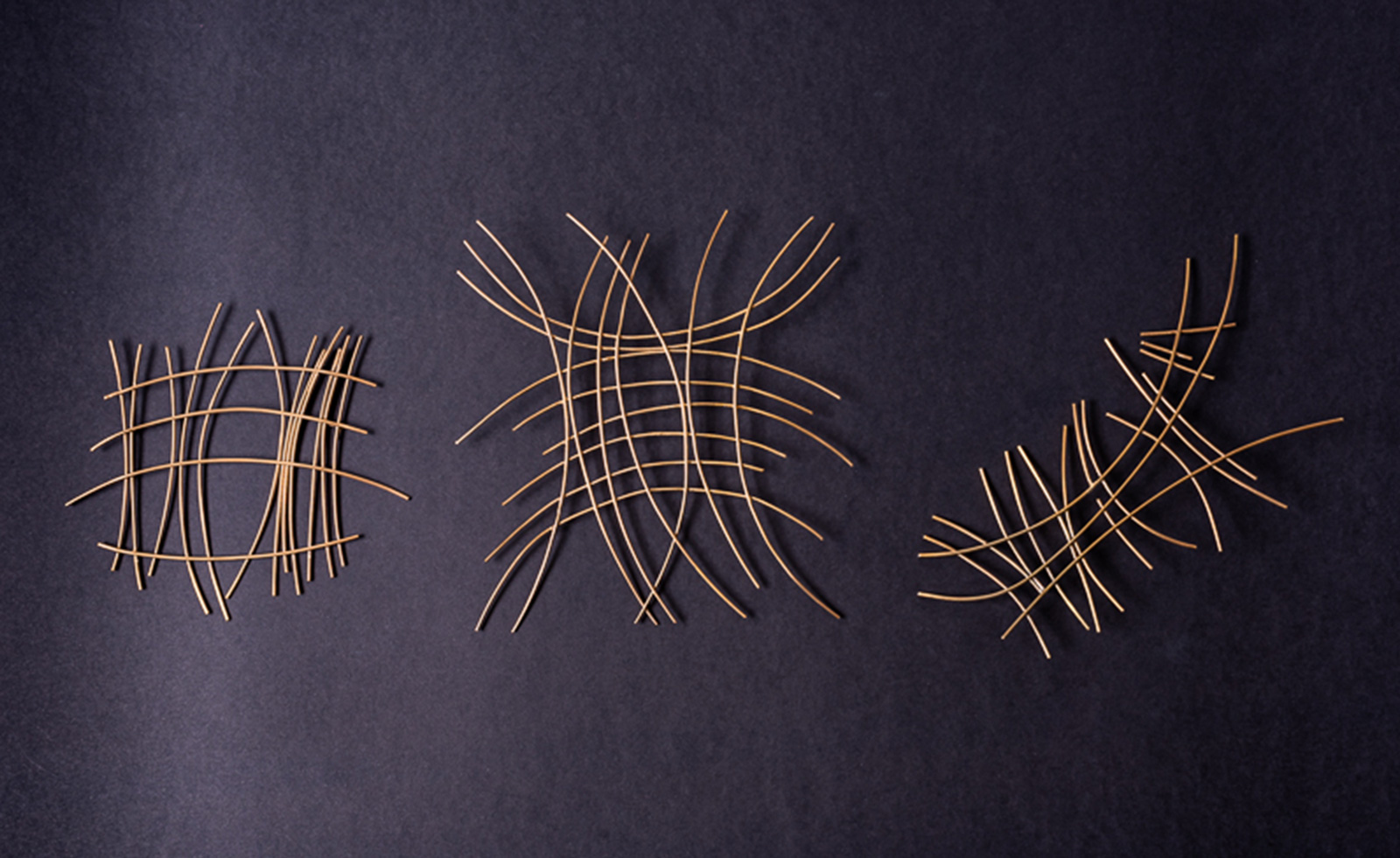
Lucy Anderson creates wearable art, and her guiding principle has acted as a potent crucible for her ideas and a calling card for clients seeking pieces that are both audacious and refined. She explains, 'I want to find a way to evoke excitement when you see something unexpected that you really love. I like to capture that sensation and represent it in my jewellery.'
In Anderson’s case the unexpected includes brooches that marry the geometric with the whimsical, earrings such as the ‘Positive/Negative’ that reference the work of legendary fashion designer Vivienne Westwood and rings that challenge her as an artist to distil 'the Golden Ratio and work out the exact placing of a fold, cut or pattern'.
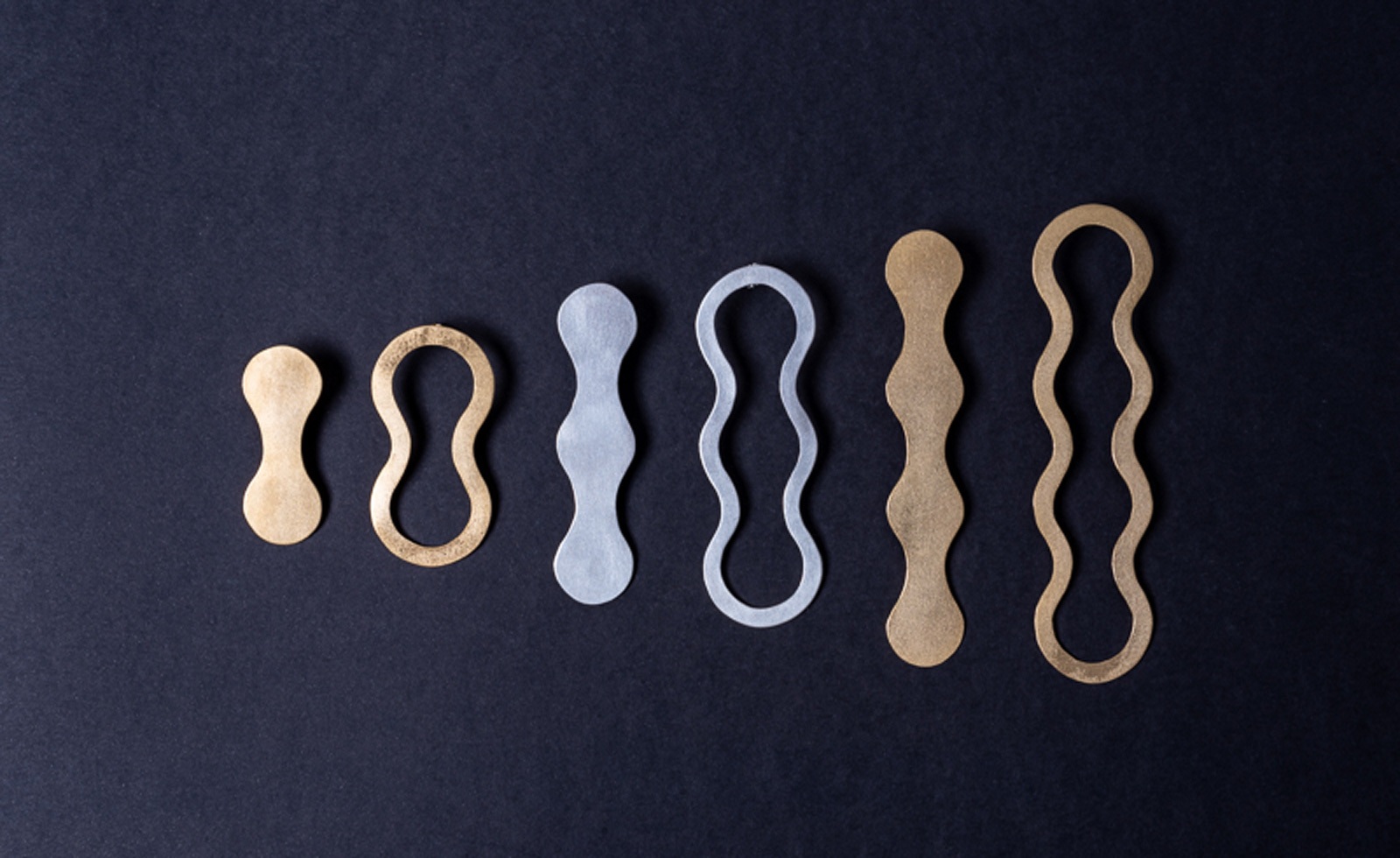
‘Positive/Negative 2’, ‘Positive Negative 3’ (in silver) and ‘Positive/Negative 4’. Ear pendants in gold plated silver
Based in West Sussex, Anderson is best known for her ‘Grid Brooch’ series, where abstract curves in brass or recycled silver are twisted into sweeping sculptural forms. Explaining the series’ genesis, she reminisces, 'My first grid brooch was inspired by a ceramic work, Oyster Net by Annie Turner, part of the V&A collection in London. The curved lines in my brooch reflected the curvature in her work.'
Anderson was previously an early years teacher, and playfulness and academic rigour are simultaneously present in her designs. Speaking of her process, she expands, 'I have a meticulous process of research, design and reflection. With a grid brooch I often “sketch” with the wire in situ, moving threads around until I achieve the result.' The scale of her brooches and many of her rings is larger than typically seen in commercial jewellery brands and she reflects, ‘The wearing of my pieces reveals a courage in the wearer that might not ordinarily be revealed.'
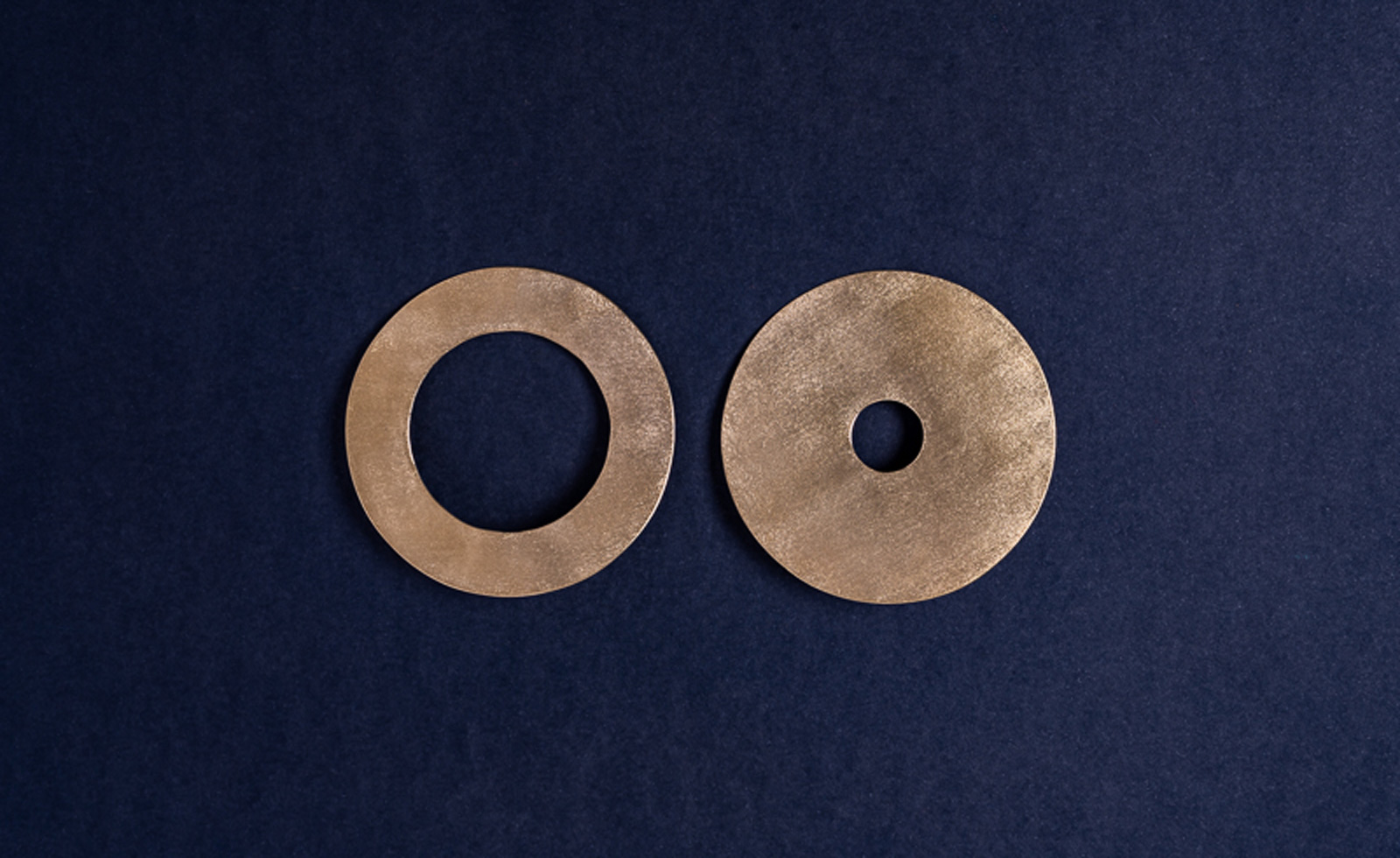
‘Ring’ and ‘Disc’ earrings / brooches in gold plated silver
Anderson is very much an artist, with jewellery acting as her medium of choice. Of a recent trip to the Tate Modern, she says: 'I loved the current exhibitions; a plethora of circles, grids and polka dots from Hilma af Klint, Piet Mondrian and Yayoi Kusama.' But whilst their work and hers may possess a visual synchronicity, she clarifies, 'jewellery has its own language that provokes a reaction and I create pieces that are memorable, unique and challenge the expectations of “jewellery”’.
Collaboration and the possibilities presented to work with different materials also inform Anderson’s craft. 'The “Brooches of Friendship” was a recent project using pieces of work and materials from artist friends. I loved the opportunity of working with wood, textiles and ceramic [as well as] metal.' Imaginative explorations are underpinned by her signature precision and have led to a growing list of collectors who either come to know of her work by word of mouth or through private views.
Anderson is part of a growing cadre of artists who are eschewing previous metrics of success. She gently resists the notion of keeping an eye on trends or categorising where she sits in the wider jewellery canon: 'Keeping my independence of thought and expression and pursuing imperfect perfection are extremely important to me.' In an age saturated with choice and riddled with comparison, her approach and work are a refreshing, beautiful and wearable riposte.
Wallpaper* Newsletter
Receive our daily digest of inspiration, escapism and design stories from around the world direct to your inbox.
instagram.com/lucy_k_anderson/
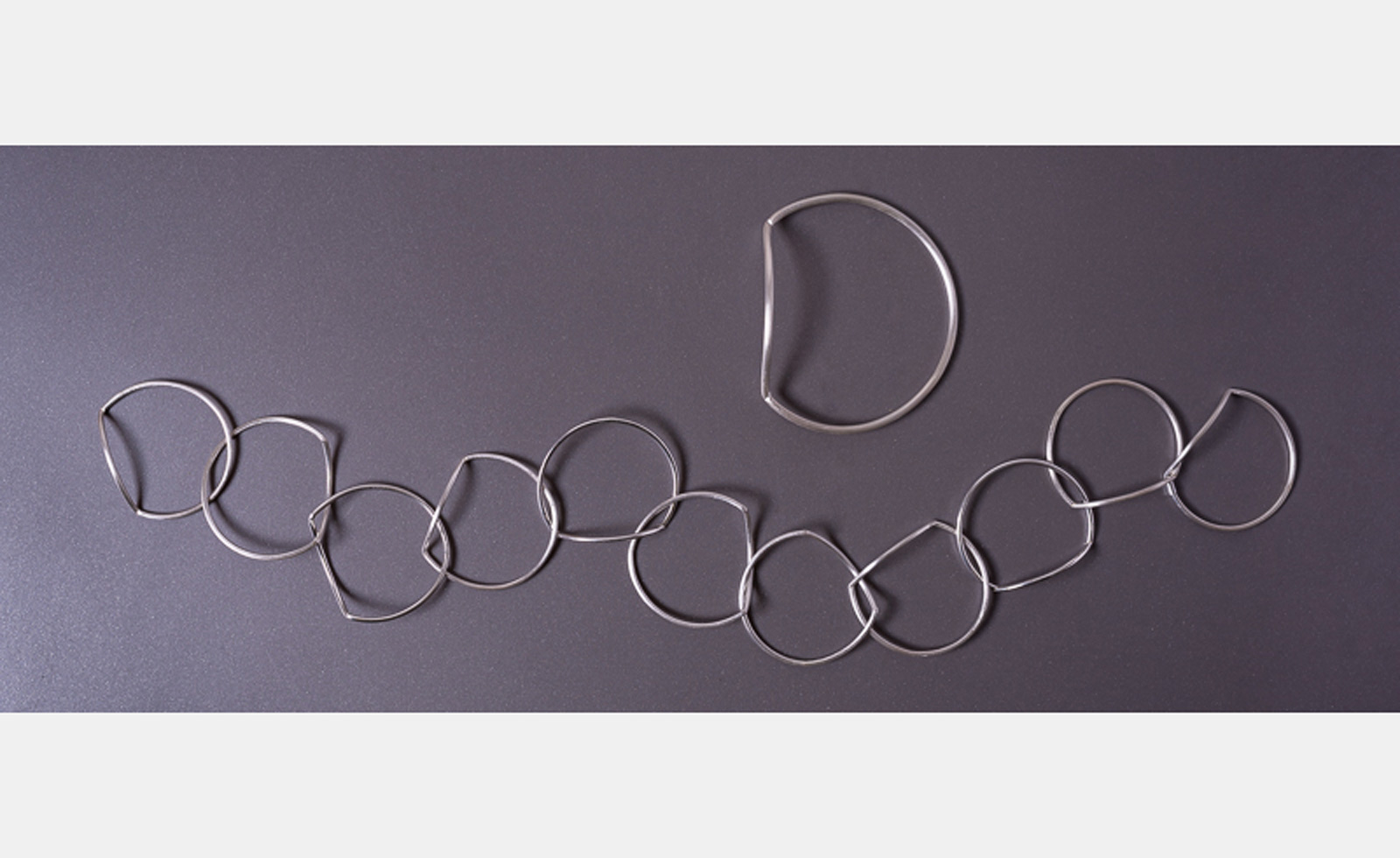
'Circle With Fold' series in silver. Pictured is a necklace and brooch
Mazzi Odu is a Ugandan-British writer, editor and cultural consultant based in Lagos, Nigeria. Her work focuses on jewellery, design, fashion and art. An alumna of the London School of Economics and Political Science, she has profiled a cross section of leading design talents and creative voices, with a special emphasis on those from the Global South and its Diaspora communities.
-
 All-In is the Paris-based label making full-force fashion for main character dressing
All-In is the Paris-based label making full-force fashion for main character dressingPart of our monthly Uprising series, Wallpaper* meets Benjamin Barron and Bror August Vestbø of All-In, the LVMH Prize-nominated label which bases its collections on a riotous cast of characters – real and imagined
By Orla Brennan
-
 Maserati joins forces with Giorgetti for a turbo-charged relationship
Maserati joins forces with Giorgetti for a turbo-charged relationshipAnnouncing their marriage during Milan Design Week, the brands unveiled a collection, a car and a long term commitment
By Hugo Macdonald
-
 Through an innovative new training program, Poltrona Frau aims to safeguard Italian craft
Through an innovative new training program, Poltrona Frau aims to safeguard Italian craftThe heritage furniture manufacturer is training a new generation of leather artisans
By Cristina Kiran Piotti
-
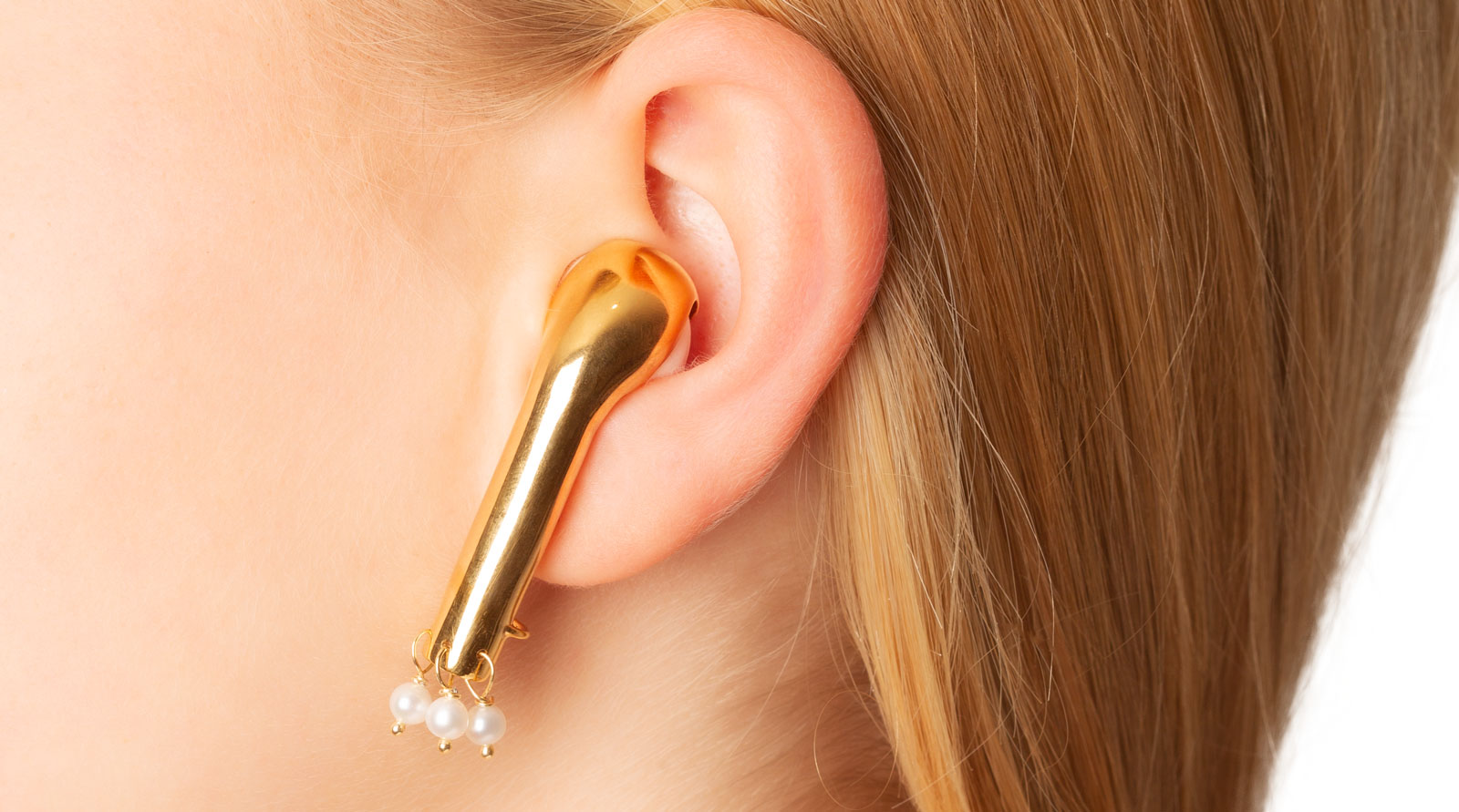 Listen up: Apple AirPod jewellery will bring joy to your digital life
Listen up: Apple AirPod jewellery will bring joy to your digital lifeJewellers are experimenting with new ways to embellish your Apple AirPods
By Hannah Silver
-
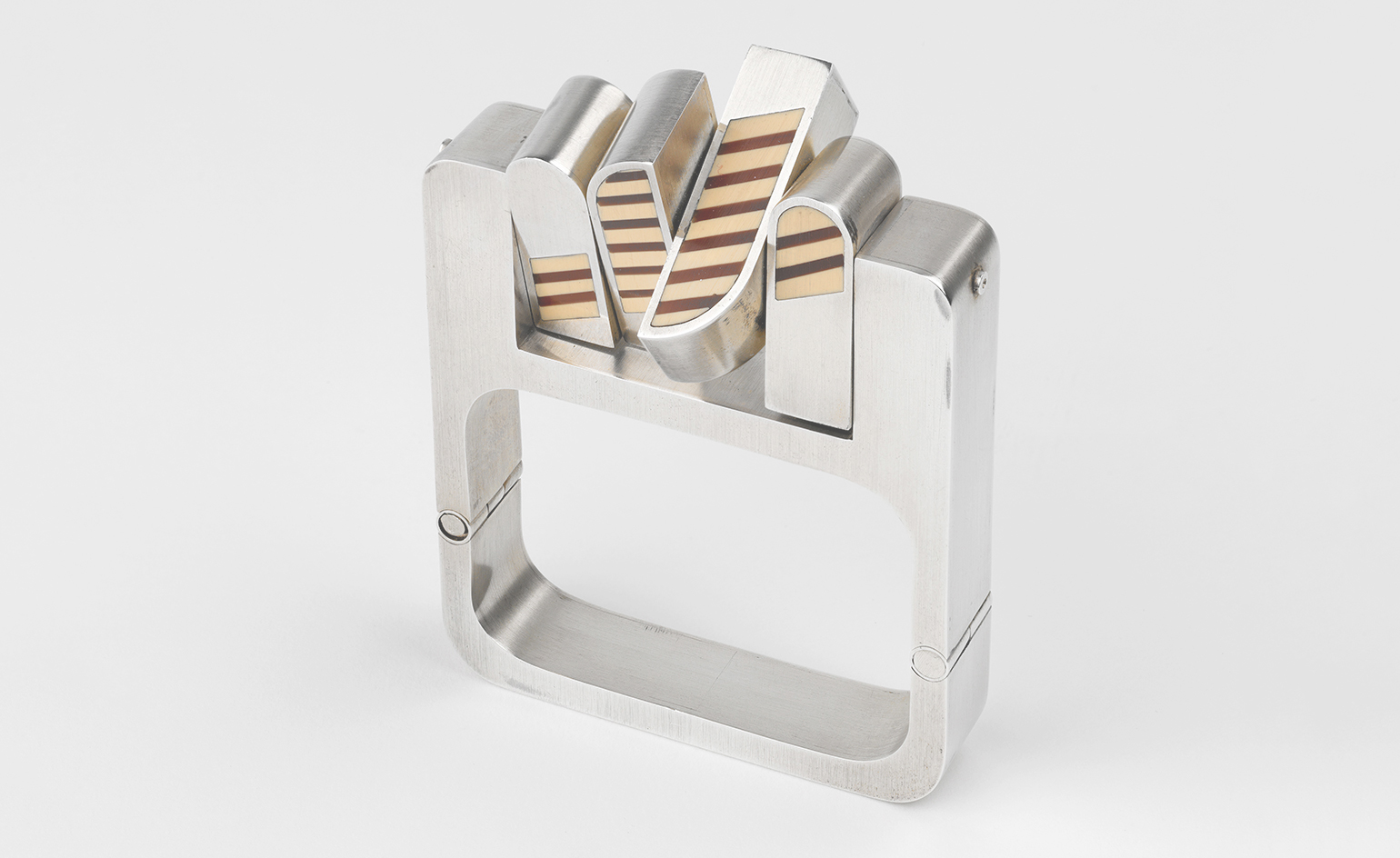 Art, adornment, object? A new exhibition explores the free spirit of studio jewellery
Art, adornment, object? A new exhibition explores the free spirit of studio jewelleryBy Elly Parsons
-
 Perfect plinths: Linda Brothwell’s wearable art at The Holburne Museum, Bath
Perfect plinths: Linda Brothwell’s wearable art at The Holburne Museum, BathBy Elly Parsons
-
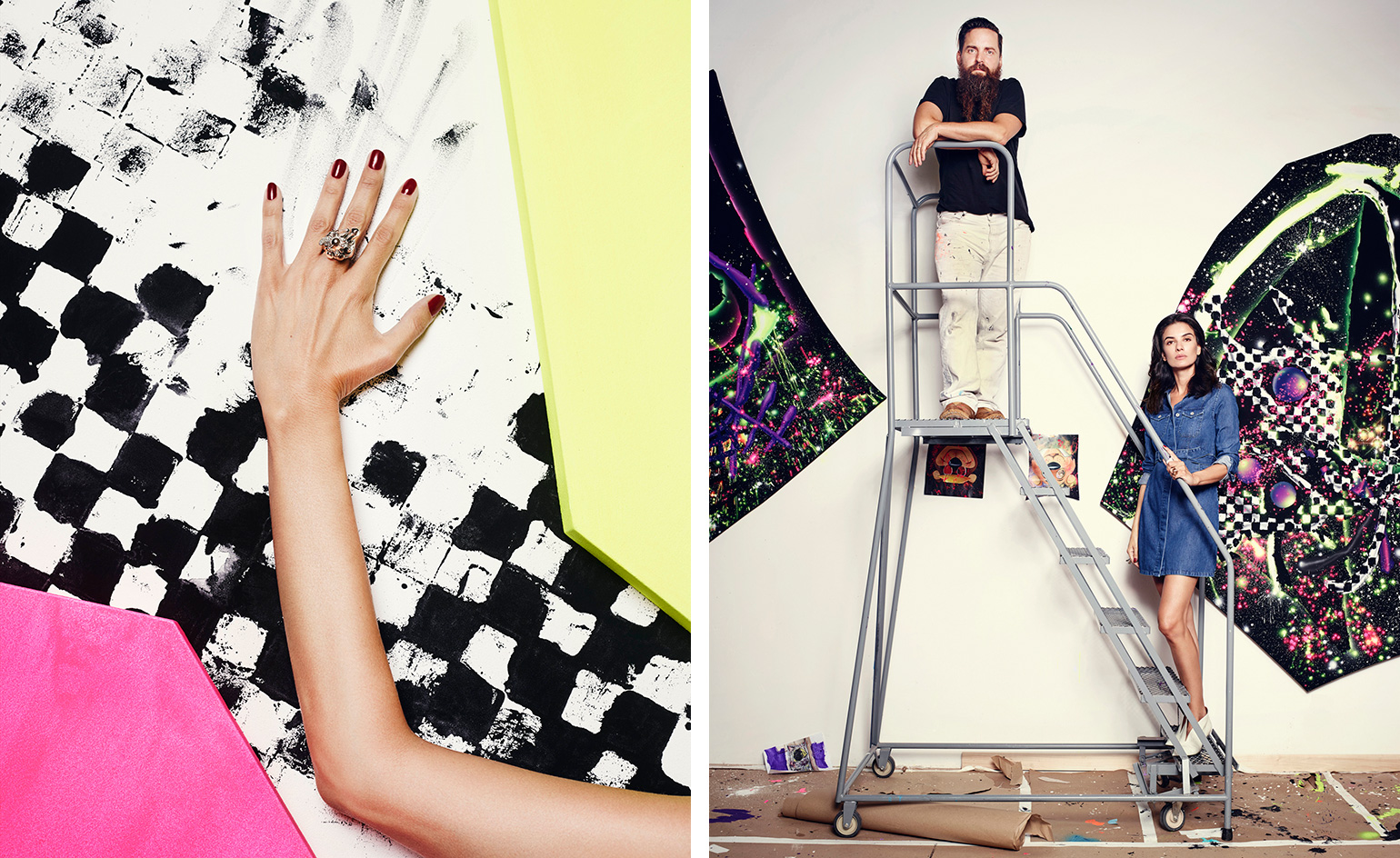 Show piece: CADA continues the tradition of artist-made jewellery with contemporary creations
Show piece: CADA continues the tradition of artist-made jewellery with contemporary creationsBy Pei-Ru Keh